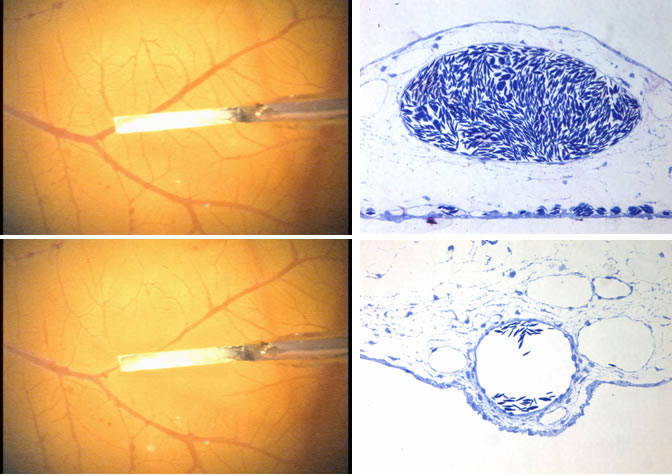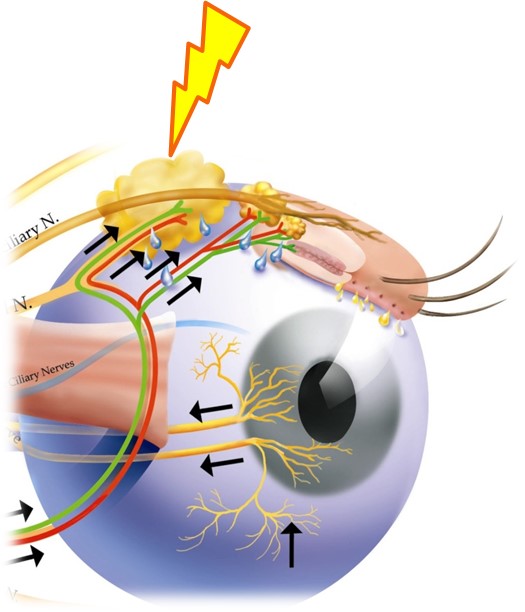Electronic Control of Organs: Vasculature and Secretory Glands

Vasoconstriction
Non-compressible hemorrhage is the most common preventable cause of death on battlefield and in civilian traumatic injuries.
Microsecond pulses of electric current can induce rapid constriction in arteries and veins. Electrically-induced vasoconstriction could be maintained for hours, and thereby prevent blood loss until the injured is evacuated to the point of medical care. The blood vessels dilate back to their original size within minutes after stimulation ends. At higher settings, a blood clotting can take place, leading to complete and permanent occlusion of the vessels. The effect is non-thermal.
We study the mechanisms and dynamics of vasoconstriction and develop portable stimulator as a part of the first aid kit.

Lacrimal system control
Dry Eye Disease affects millions of people world-wide. In this condition, the tear film is insufficient to protect corneal surface, resulting in discomfort and even loss of sight.
Electrical stimulation of the efferent and afferent neurons controlling the lacrimal gland increases secretion of the tear fluid, lipids and proteins, and provides relief to patients afflicted by dry eye disease.
We study the mechanisms of stimulation of the lacrimal system and develop neurostimulator to increase tear secretion.

